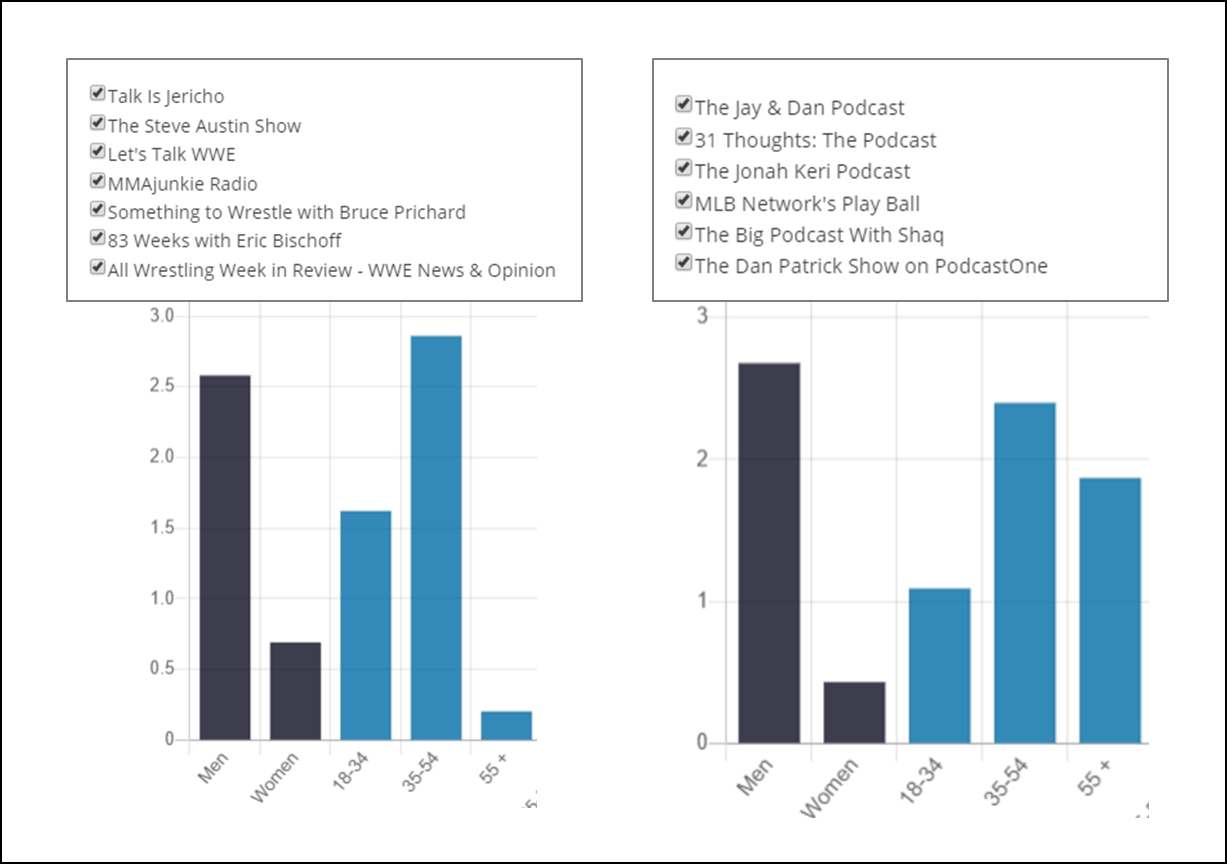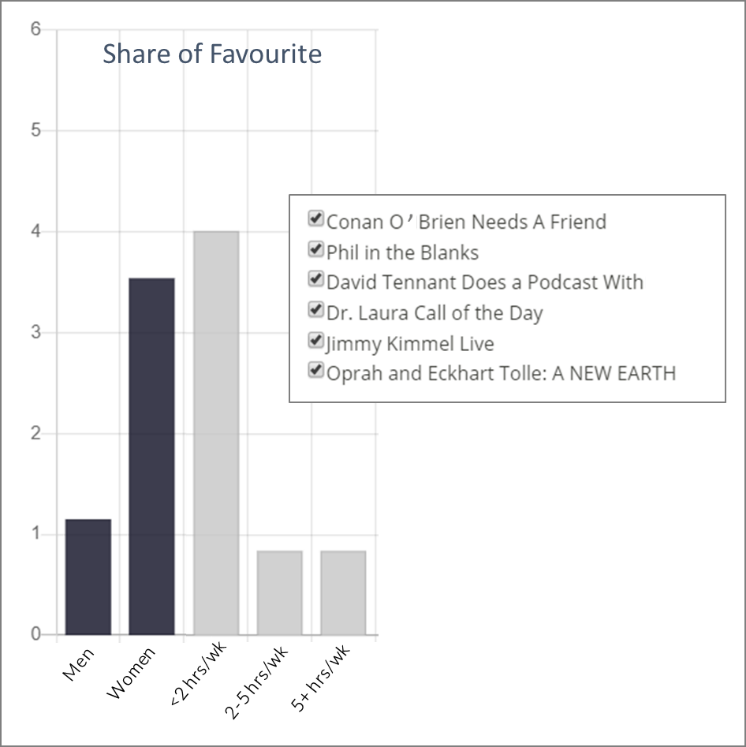Going Beyond the Download Numbers to Build a Better Podcast Campaign
One of the hurdles still facing the podcast industry is the two-headed monster of measurement & monetization, with the former still holding back the latter. Measurement is improving by leaps and bounds, but there is still a gap in knowing who is listening to what types of podcasts. For those used to selling on traditional media metrics, it’s like trying to get full value for your hip, affluent-millennial-focused content when you’re limited to selling on 2+ ratings.
In The Canadian Podcast Listener, we ask monthly podcast listeners to name the podcasts they listen to, regardless of platform. By looking at those results by demos, regions and listener segments, we are able to close at least some of that knowledge gap. With the help of contextual metadata pulled from Apple Podcasts by the data gurus at ART19, our Canadian Podcast Chart allows users to create groups of podcasts, publishers or genres, and see the relative demographic strengths of different types of podcasts.
Here’s an example, comparing past month reach for two types of sports podcasts on The Canadian Podcast Chart: wrestling podcasts and other sports podcasts. Not surprisingly, both groups of podcasts skew sharply towards men. However, the wrestling group on the left has almost no coverage among podcast listeners aged 55+. Even knowing that sports content has a reliable male skew, the income, age and education profile of two groups of podcasts can differ dramatically.
Similarly, different publishers are going to attract different audiences based on podcasts in their network.
With this selection of American podcast publishers stemming from the public radio world, we get a pretty good idea of the types of listeners we’re going to be reaching; listeners are going to be well-educated, skew slightly female, and fall mostly in the 18-54 age range. It’s enough to give us some confidence that we’re looking in the right area if that’s who we want to reach.
Finally, by aggregating results within a specific subgenre of podcast, we can also get insights into podcast listeners in general. For example, shows hosted by celebrities from outside the podcasting space represent a much greater percentage of the ‘favourite’ podcast mentions among lighter podcast listeners than among those listening two or more hours a week.
This is consistent with one of the findings from The Canadian Podcast Listener 2019. When we asked relatively new listeners to describe what first got them listening to podcasts, 19% said it was because one of their favorite radio hosts, authors or celebrities had a podcast. These listeners may branch out into the wider podcast world over time, but for now, it looks like the celebrity shows are getting new listeners’ feet in the door.
By no means the final answer to podcasting’s measurement challenges, The Canadian Podcast Chart has helped to take us one step beyond downloads towards understanding which Canadians are listening to which kinds of podcasts.
The Canadian Podcast Listener Study 2019—including the Canadian Podcast Chart—is co-published by Signal Hill Insights and Ulster Media, with support from The Podcast Exchange (TPX). Results are based on online surveys using a market representative sample of more than 4,500 Canadian adults from Maru Voice Canada. A free summary report of top-line findings from this year’s study is available here.




